Results
-
 £137.99
£137.99Hanover Festival - Philip Sparke
The Hanover Wind Symphony, New Jersey, USA was founded in 1984 by its conductor Peter Boor. He commissioned HANOVER FESTIVAL to celebrate the band's 15th Birthday and the first performance took place on October 27th 1999. The piece starts with a solemn brass fanfare. Woodwinds join in and the music subsides into an expressive chorale. A climax is reached and the fanfare returns. Trumpets introduce an explosive vivo section, characterised by an energetic theme from the horns and low clarinets. A bridge passage with strong brass chords leads to a playful section that introduces a legato central theme under woodwind figures. This is taken up by the full band, the playfulmusic returns and the original horn tune is reintroduced. Finally the opening fanfare returns, this time accompanied by music from the vivo section, until a fast and furious coda closes the work.
Estimated dispatch 7-14 working days
-
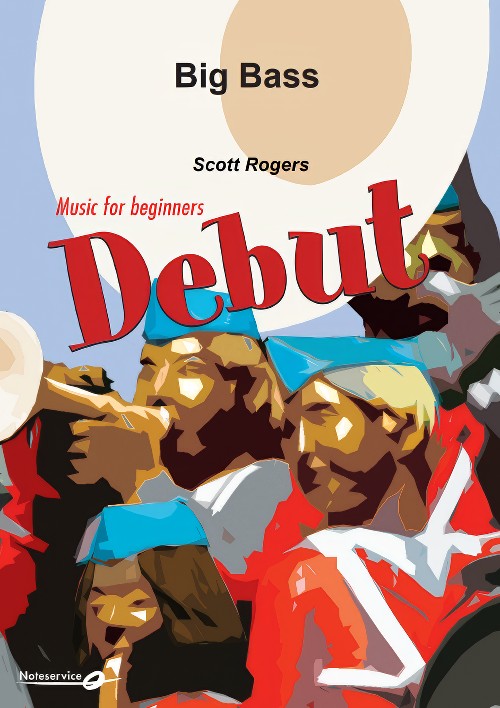 £56.60
£56.60Big Bass (Flexible Ensemble - Score and Parts) - Rogers, Scott
Every beginning low brass player deserves a big bassline. With a rhythmic focus on quarter- and eighth notes and a range of a fourth, this piece is easily accessible for all beginning low brass players and mastery breeds motivation, and that s something young musicians on trombone, baritone and tuba need. There is also a short chromatic motive that appears at B. This is written to lie well on the slide and valves and can be a good way to teach the important difference between concert E and Eb.Duration: 1.00
Estimated dispatch 7-14 working days
-
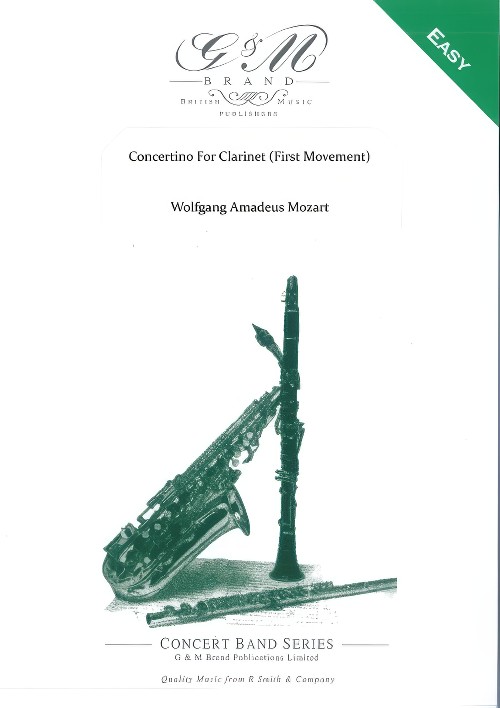 £44.95
£44.95Concertino For Clarinet (First Movement) (Concert Band - Score and Parts) - Mozart, Wolfgang Amadeus - Johnson, Stuart
Johnson, Stuart has arranged and adapted the first movement of this much loved Mozart piano sonata (KV 282) to create a delightful and welcome addition to the clarinet repertoire. The accompaniment is lightly scored for small wind band. Primarily this is to create a classical feel which reflects the style of the music. However, larger bands may wish to place the piece strategically in the program to give the heavy brass a rest. To this end, directors may also prefer to use single players on the brass and saxophone parts which would also help to give and orchestral feel to the performance.
Estimated dispatch 7-14 working days
-
 £8.95
£8.95Concertino For Clarinet (First Movement) (Concert Band - Score Only) - Mozart, Wolfgang Amadeus - Johnson, Stuart
Johnson, Stuart has arranged and adapted the first movement of this much loved Mozart piano sonata (KV 282) to create a delightful and welcome addition to the clarinet repertoire. The accompaniment is lightly scored for small wind band. Primarily this is to create a classical feel which reflects the style of the music. However, larger bands may wish to place the piece strategically in the program to give the heavy brass a rest. To this end, directors may also prefer to use single players on the brass and saxophone parts which would also help to give and orchestral feel to the performance.
Estimated dispatch 7-14 working days
-
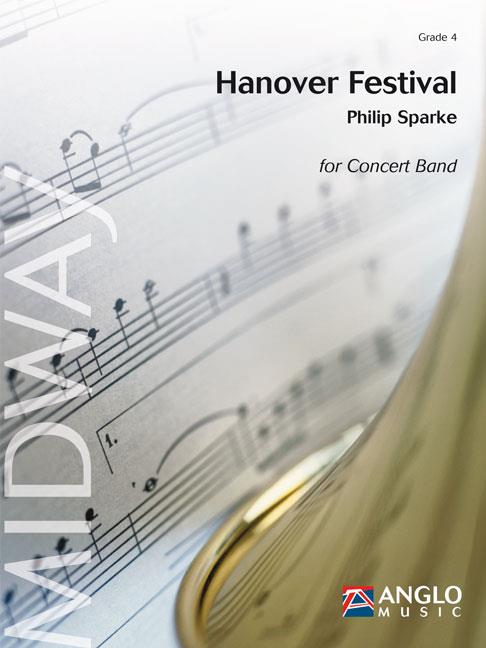 £137.99
£137.99Hanover Festival (Concert Band - Score and Parts) - Sparke, Philip
The Hanover Wind Symphony, New Jersey, USA was founded in 1984 by its conductor Peter Boor. He commissioned Hanover Festival to celebrate the band's 15th Birthday and the first performance took place on October 27th 1999. The piece starts with a solemn brass fanfare. Woodwinds join in and the music subsides into an expressive chorale. A climax is reached and the fanfare returns. Trumpets introduce an explosive vivo section, characterised by an energetic theme from the horns and low clarinets. A bridge passage with strong brass chords leads to a playful section that introduces a legato central theme under woodwind figures. This is taken up by the full band, the playful music returns and the original horn tune is reintroduced. Finally the opening fanfare returns, this time accompanied by music from the vivo section, until a fast and furious coda closes the work.Duration: 8:20
Estimated dispatch 7-14 working days
-
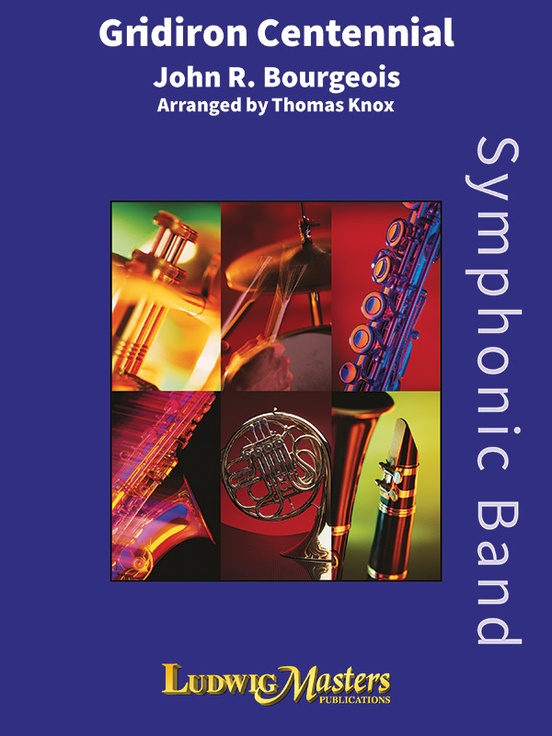 £62.95
£62.95Gridiron Centennial - John R. Bourgeois / arr. Thomas Knox
This is a very fresh march from the former director of the United States Marine Band. It is more of a concert march than a street march and makes wonderful use of the many voices of the band, from a delightful flute/piccolo melody to a lush low brass statement in which only the brass voices are heard, without constant pulse of percussion. In fact, the percussion parts are particularly wonderful in that they enhance the musical lines of the overall work rather than merely keeping time in typical march fashion. This is a terrific march for any band.
Estimated dispatch 3-5 working days
-
 £189.95
£189.95CANYONS (Novello Symphonic) - McCabe, John
Score & Parts. Canyons is a response to the imposing landscape of the American South West, an exploration of musical ideas. The piece falls into four main sections. Following a build-up in the brass and woodwind, there is a slowish first section with massive chords, percussive pounding and some contrapuntal development of the work's main thematic idea. This is followed by a brief scherzo and then a slow movement which again derives from chordal material and another contrapuntal development. The fourth section is an extended Allegro Vivace, dominated by a dance-like theme introduced by the trumpets and an important motif heard at the start by the brass and percussion. After the final climax, the Adagio epilogue leads the music to a quiet close, the solo piccolo restating the cornet figure heard at the opening of the work. (Grade 4.5) Duration: 15 mins. Recorded on QPRM127D GUILDHALL SYMPHONIC WIND ENSEMBLE
Estimated dispatch 7-14 working days
-
 £37.95
£37.95CANYONS (Novello Symphonic) Extra Score - McCabe, John
Extra Score. Canyons is a response to the imposing landscape of the American South West, an exploration of musical ideas. The piece falls into four main sections. Following a build-up in the brass and woodwind, there is a slowish first section with massive chords, percussive pounding and some contrapuntal development of the work's main thematic idea. This is followed by a brief scherzo and then a slow movement which again derives from chordal material and another contrapuntal development. The fourth section is an extended Allegro Vivace, dominated by a dance-like theme introduced by the trumpets and an important motif heard at the start by the brass and percussion. After the final climax, the Adagio epilogue leads the music to a quiet close, the solo piccolo restating the cornet figure heard at the opening of the work. (Grade 4.5) Duration: 15 mins. Recorded on QPRM127D Great British Music for Wind Band Vol.4 (Guildhall Symphonic Wind Ensemble, Peter Gane)
Estimated dispatch 7-14 working days
-
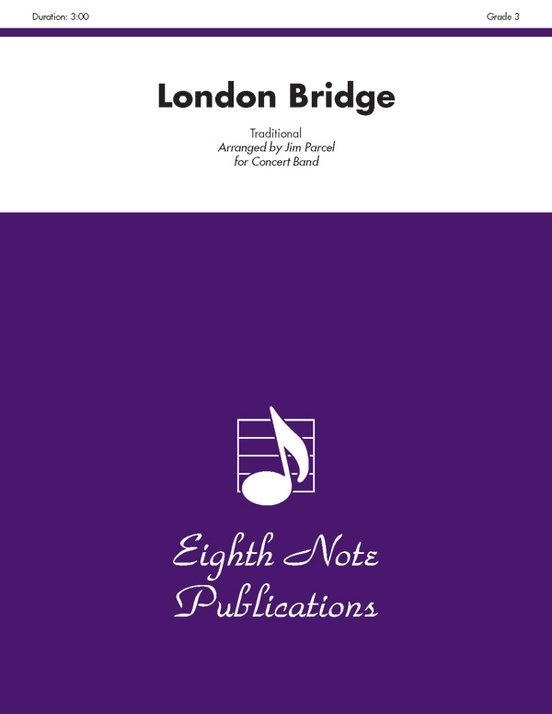 £62.95
£62.95London Bridge
London Bridge was originally written for brass quintet and later scored for concert band. Below is the composer recalling the quintet version's premiere. London Bridge was designed to appeal to children, but also to the child remaining in the rest of us. It kind of developed asit went along and ended up where it is today if that makes any sense at all. A few days after the first draft was finished I took it to a clinic for high school band members at one of theAnchorage schools. The clinic was put on by the Canadian Brass who were in Anchorage on a concert tour. They sight read it at the clinic. I even asked them to autograph the parts. They did. I did not have the nerve to ask them what they thought about it, and they offered meno opinion. That may have been good. This is a terrific novelty piece that shows off the whole band, quotes famous pieces and allows the students to really have fun.
Estimated dispatch 3-5 working days
-
 £46.95
£46.95Grace Valley Overture - Steve Hodges
This energetic overture opens strongly with the low brass presenting a melodic arpeggio motive that recurs throughout the A section of the piece. The B section provides an excellent contrast with an expressive presentation by the woodwinds leading to a sensitive chorale setting. With shifting minor and major modes, the section builds with the brass before ending in a tranquil manner. A repeat of the opening section leads to a dynamic coda, bringing the piece to an exciting conclusion. "This is well written educational material that plays at the more technical end of this grade level." -
Estimated dispatch 3-5 working days
